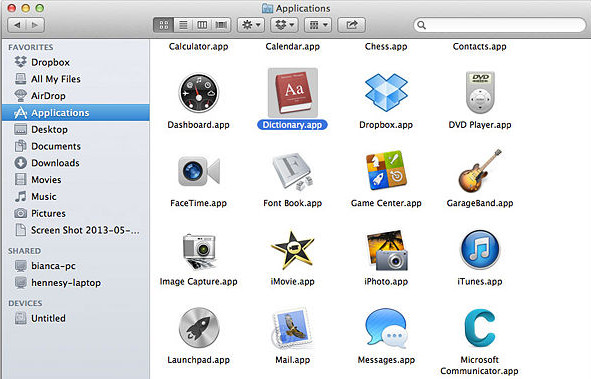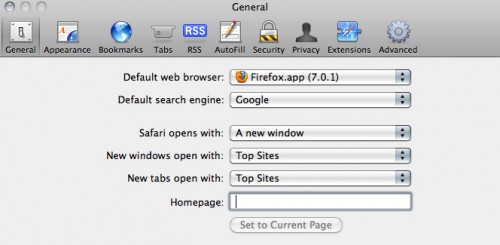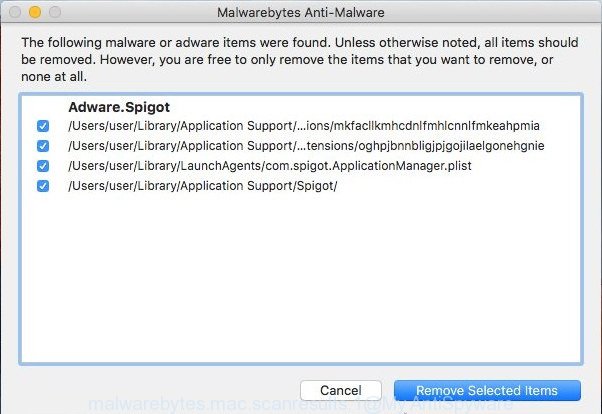PrudenSearch is a potentially unwanted program (PUP) from the category of Adware (also known as ‘adware software’). What is Adware? Adware is unwanted software developed to throw advertisements up on your web browser screen. Adware software generates revenue for its creator by occasionally displaying a huge number of ads and popup deals. You might experience a change in your home page or search engine, new tabs opening or even a redirect to unsafe web sites.

Unwanted ads
Does the PrudenSearch adware steal your privacy information? It can install a component that enables its developer to track which web-pages you visit, which products you look at upon those pages. They are then able to choose the type of advertisements they show you. So, if you had adware software on your MAC, there is a good chance you have another that is collecting and sharing your personal information with third parties, without your knowledge.
If you are unfortunate have adware or malware running on your MAC system, you can follow the few simple steps here to remove PrudenSearch ads from your internet browser.
How does PrudenSearch get on your computer
Adware actively distributed with free software, along with the setup file of these programs. Therefore, it’s very important, when installing an unknown program even downloaded from well-known or big hosting site, read the Terms of use and the Software license, as well as to choose the Manual, Advanced or Custom install mode. In this method, you can disable the installation of third-party internet browser extensions and applications and protect your Apple Mac from adware.
Threat Summary
| Name | PrudenSearch, Pruden Search 1.0 app |
| Type | adware, PUP (potentially unwanted program), pop up ads, pop up virus, pop ups |
| Symptoms |
|
| Removal | PrudenSearch removal guide |
How to Remove PrudenSearch
In the step-by-step tutorial below, we’ll try to cover the Mozilla Firefox, Chrome and Safari and provide general advice to get rid of PrudenSearch ads. You may find some minor differences in your Mac install. No matter, you should be okay if you follow the steps outlined below: remove all suspicious and unknown apps, reset browsers settings, use free malicious software removal tools. Read it once, after doing so, please bookmark this page (or open it on your smartphone) as you may need to shut down your browser or reboot your Apple Mac.
To remove PrudenSearch, complete the steps below:
- How to delete PrudenSearch adware without any software
- Automatic Removal of PrudenSearch
- Use AdBlocker to stay safe online
- To sum up
How to delete PrudenSearch adware without any software
First of all, try to remove PrudenSearch manually; to do this, follow the steps below. Of course, manual adware removal requires more time and may not be suitable for those who are poorly versed in system settings. In this case, we suggest that you scroll down to the section that describes how to remove PrudenSearch adware software using free tools.
Delete questionable applications using the Finder
Some of potentially unwanted programs, adware and browser hijackers can be uninstalled using the ‘Move to Trash’ tool that can be found in the Finder. So, if you’re running any version of Apple Mac and you have noticed an unwanted program, then first try to remove it through the Finder.
Open Finder and click “Applications” as on the image below.

You will see a list of applications installed on your machine. We recommend to pay maximum attention to the program you installed last. Most probably, it’s the PrudenSearch adware. If you are in doubt, you can always check the application by doing a search for her name in Google, Yahoo or Bing. After the program which you need to remove is found, simply right click on its name, and select “Move to Trash”.
Don’t forget, select Finder, then “Empty Trash”.
Remove PrudenSearch adware software from Chrome
If you have adware software, PrudenSearch removal problems or Chrome is running slow, then reset Google Chrome can help you. In this guidance we’ll show you the method to reset your Chrome settings and data to default values without reinstall.

- First run the Chrome and press Menu button (small button in the form of three dots).
- It will display the Chrome main menu. Select More Tools, then click Extensions.
- You will see the list of installed extensions. If the list has the extension labeled with “Installed by enterprise policy” or “Installed by your administrator”, then complete the following tutorial: Remove Chrome extensions installed by enterprise policy.
- Now open the Google Chrome menu once again, click the “Settings” menu.
- You will see the Chrome’s settings page. Scroll down and press “Advanced” link.
- Scroll down again and press the “Reset” button.
- The Google Chrome will display the reset profile settings page as on the image above.
- Next click the “Reset” button.
- Once this procedure is finished, your web browser’s start page, newtab page and default search provider will be restored to their original defaults.
- To learn more, read the article How to reset Google Chrome settings to default.
Remove PrudenSearch from Safari
The Safari reset is great if your internet browser is hijacked by PrudenSearch or you have unwanted add-ons or toolbars on your internet browser, that installed by an malicious software.
Run Safari web browser. Next, choose Preferences from the Safari menu.

First, click the “Security” tab. Here, choose “Block pop-up windows”. It will stop some types of pop-ups.
Now, click the “Extensions” tab. Look for suspicious extensions on left panel, choose it, then click the “Uninstall” button. Most important to delete all questionable extensions from Safari.
Once complete, check your start page and search engine settings. Click “General” tab. Make sure that the “Homepage” field contains the website you want or is empty.

Make sure that the “Search engine” setting shows your preferred search engine. In some versions of Safari, this setting is in the “Search” tab.
Delete PrudenSearch adware from Firefox
Resetting Firefox web-browser will reset all the settings to their default values and will remove PrudenSearch ads, malicious add-ons and extensions. However, your themes, bookmarks, history, passwords, and web form auto-fill information will not be deleted.
First, start the Mozilla Firefox. Next, press the button in the form of three horizontal stripes (![]() ). It will show the drop-down menu. Next, press the Help button (
). It will show the drop-down menu. Next, press the Help button (![]() ).
).

In the Help menu press the “Troubleshooting Information”. In the upper-right corner of the “Troubleshooting Information” page press on “Refresh Firefox” button as shown on the image below.

Confirm your action, press the “Refresh Firefox”.
Automatic Removal of PrudenSearch
The adware software may hide its components which are difficult for you to find out and remove completely. This can lead to the fact that after some time, the PrudenSearch adware software once again infect your MAC. Moreover, We want to note that it is not always safe to delete adware software manually, if you don’t have much experience in setting up and configuring the operating system. The best solution to scan for and get rid of adware is to run free malware removal apps.
Run MalwareBytes Anti-Malware (MBAM) to get rid of PrudenSearch
If you are still having problems with the PrudenSearch adware removal or just wish to check your MAC occasionally for adware and other malicious software, then download MalwareBytes Free. It is free for home use, and searches for and deletes various undesired apps that attacks your machine or degrades computer performance. MalwareBytes Free can delete browser hijacker infection, adware, potentially unwanted programs as well as malware, including ransomware and trojans.
Installing the MalwareBytes AntiMalware is simple. First you’ll need to download MalwareBytes on your machine by clicking on the link below.
21017 downloads
Author: Malwarebytes
Category: Security tools
Update: September 10, 2020
Once the download is done, close all windows on your Apple Mac. Further, start the saved file. Follow the prompts.
The MalwareBytes will automatically run and you can see its main window as displayed below.
Next, click the “Scan Now” button to begin scanning your MAC system for the PrudenSearch adware. This task can take quite a while, so please be patient. While the tool is checking, you can see how many objects and files has already scanned.

When the scan is done, MalwareBytes will produce a list of unwanted programs and adware. Make sure all threats have ‘checkmark’ and click “Remove Selected Items” button.

The MalwareBytes will start to delete PrudenSearch adware.
Use AdBlocker to stay safe online
Run ad blocker program like AdGuard in order to block advertisements, malvertisements, pop-ups and online trackers, avoid having to install malicious and adware browser plug-ins and add-ons that affect your computer performance and impact your MAC OS security. Browse the Internet anonymously and stay safe online!

- Installing the AdGuard is simple. First you will need to download AdGuard on your MS Windows Desktop by clicking on the link below.
AdGuard for Mac download
3779 downloads
Author: © Adguard
Category: Security tools
Update: January 17, 2018
- Once the download is finished, start the downloaded file. You will see the “Setup Wizard” program window. Follow the prompts.
- Once the installation is done, press “Skip” to close the installation application and use the default settings, or click “Get Started” to see an quick tutorial which will help you get to know AdGuard better.
- In most cases, the default settings are enough and you do not need to change anything. Each time, when you start your Apple Mac, AdGuard will start automatically and stop annoying advertisements, block harmful and misleading web-pages.
To sum up
After completing the few simple steps shown above, your machine should be clean from this adware software and other malicious software. The Mozilla Firefox, Safari and Google Chrome will no longer show the PrudenSearch ads when you browse the Net. Unfortunately, if the few simple steps does not help you, then you have caught a new adware, and then the best way – ask for help.
Please create a new question by using the “Ask Question” button in the Questions and Answers. Try to give us some details about your problems, so we can try to help you more accurately. Wait for one of our trained “Security Team” or Site Administrator to provide you with knowledgeable assistance tailored to your problem with the PrudenSearch adware.



















